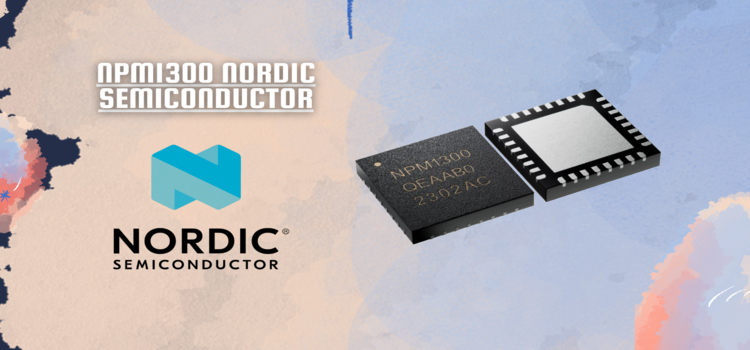Nordic Semiconductor has unveiled the nPM1300, a Power Management Integrated Circuit (PMIC) designed specifically for battery-operated applications. This PMIC combines two buck converters, two Low Dropout Regulators (LDOs), and integrated battery charging into a single chip, effectively reducing the number of discrete components required in an end-product.
To facilitate the evaluation and implementation of the nPM1300 PMIC, Nordic Semiconductor has introduced the nPM1300 Evaluation Kit (EK) and the nPM PowerUP PC app. These tools enable developers to easily assess, configure, and integrate the PMIC without the need for coding. The nPM1300 PMIC also incorporates system management features and fuel gauging capabilities tailored for low-power wireless applications.
The fuel gauge functionality of the nPM1300 utilizes an algorithm-based approach, employing voltage, current, and temperature monitoring to deliver enhanced accuracy compared to traditional voltage-based fuel gauges. Remarkably, the PMIC achieves this improved precision while maintaining significantly lower power consumption than coulomb counter-type fuel gauges. Nordic Semiconductor claims to be the first company to strike such a balance between accuracy and power efficiency.
The nPM1300 PMIC is particularly suitable for battery charging in applications based on the nRF9160 System-in-Package (SiP) for cellular IoT. By utilizing the PMIC's unregulated output, the internal buck regulators of the nRF9160 can be powered efficiently. Configuration of the PMIC is accomplished through an I2C-compatible Two Wire Interface (TWI), providing access to various advanced system management functions. These functions include integrated hard reset capabilities, precise battery fuel gauging, system-level watchdog, power loss warning, and recovery from failed boot—all of which are typically implemented as discrete components in conventional designs but are integrated directly into the nPM1300.
Operating within a voltage range of 2.4 V to 5.5 V, the nPM1300 PMIC can be powered by an external 4.0 V to 5.5 V power supply or a battery. The PMIC employs two separate DC/DC buck converters to regulate two power rails, offering configurable voltage outputs between 1.0 V and 3.3 V with a maximum current of 200 mA. Additionally, two power rails function as load switches, capable of switching currents up to 100 mA from external sources. These same power rails can also operate as LDOs when directly powered by the nPM1300, providing configurable voltage outputs between 1.0 V and 3.3 V with a maximum output current of 50 mA. Furthermore, the unregulated input voltage is accessible as an output from the PMIC.
The nPM1300 incorporates a linear charging module that supports the charging of single-cell Li-ion, Li-poly, and LiFePO4 batteries. This charging module offers programmable termination voltage between 3.5 V and 4.45 V and supports charge currents of up to 800 mA. The battery charger includes automatic thermal regulation with a programmable maximum chip temperature during charging.
Other notable features of the PMIC include USB port detection with automatic current limits, ranging from 100 mA to 500 mA for standard USB and up to 1500 mA for USB-C connections. The PMIC also offers dynamic power path management, which automatically switches to battery power if the mains power is disconnected. It further includes ultra-low-current ship and hibernate modes with a programmable wake-up timer. Additionally, the PMIC incorporates three LED drivers and five GPIOs that can be repurposed as direct control lines for time-critical functions instead of relying on serial commands.
The nPM1300 finds application in various fields such as advanced wearables and portable medical devices. To simplify the evaluation and configuration process, the nPM1300 EK allows developers to assess the PMIC without writing any code. By connecting the EK to the nPM PowerUP app, which can be found in the nRF Connect for Desktop software, developers can conveniently configure the settings of the nPM1300 through a graphical user interface (GUI). Once configured, the settings can be ported to the System-on-Chip (SoC) or microcontroller used in their IoT application. The EK features two USB-C connectors for data and power connections, JST battery connectors compatible with batteries that have or lack an internal NTC thermistor, as well as male pin headers providing access to all the nPM1300's connections. Moreover, the EK's three LEDs and four pushbuttons facilitate evaluation of the GPIO and LED driver functionality of the PMIC.
